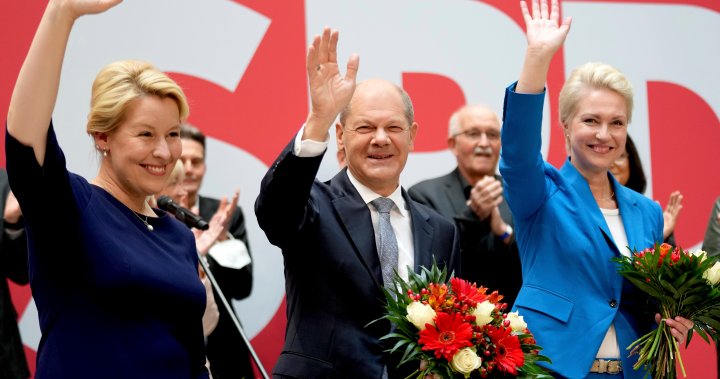
As Angela Merkel departs, here’s how Germany’s government could look
Global News
The first-placed party typically leads German governments, but that isn't always the case.
Germany‘s voters have delivered their verdict. Now it’s up to party leaders to thrash out who will succeed Chancellor Angela Merkel after 16 years in office and with what political priorities.
The shape of Germany’s new Bundestag, or lower house of parliament, is now clear. But there are majorities for three more or less plausible new coalition governments, and it could take weeks or months to put a new administration in place. Here’s a look at how the process works.
The first-placed party typically leads German governments, but that isn’t always the case. It can end up in opposition if other parties form a coalition without it. That happened in 1976 and 1980, when then-Chancellor Helmut Schmidt stayed in office although his party finished second.
There is no referee for the process of forming a new government, and no set time limit. Parties hold exploratory talks to determine who they have most common ground with, and one combination of parties then moves on to formal coalition talks.
Those negotiations typically produce a detailed coalition agreement setting out the new government’s plans. That will typically need approval at least from congresses of the parties involved. The center-left Social Democrats, who emerged from Sunday’s election as the strongest party, held ballots of their entire membership in 2013 and 2018 to sign off on agreements to join Merkel’s center-right Union bloc as its junior partner in government.
Once a coalition is ready, Germany’s president nominates to the Bundestag a candidate for chancellor, who needs a majority of all members to be elected.











